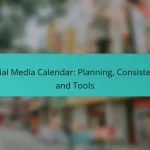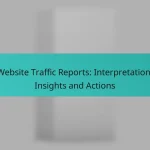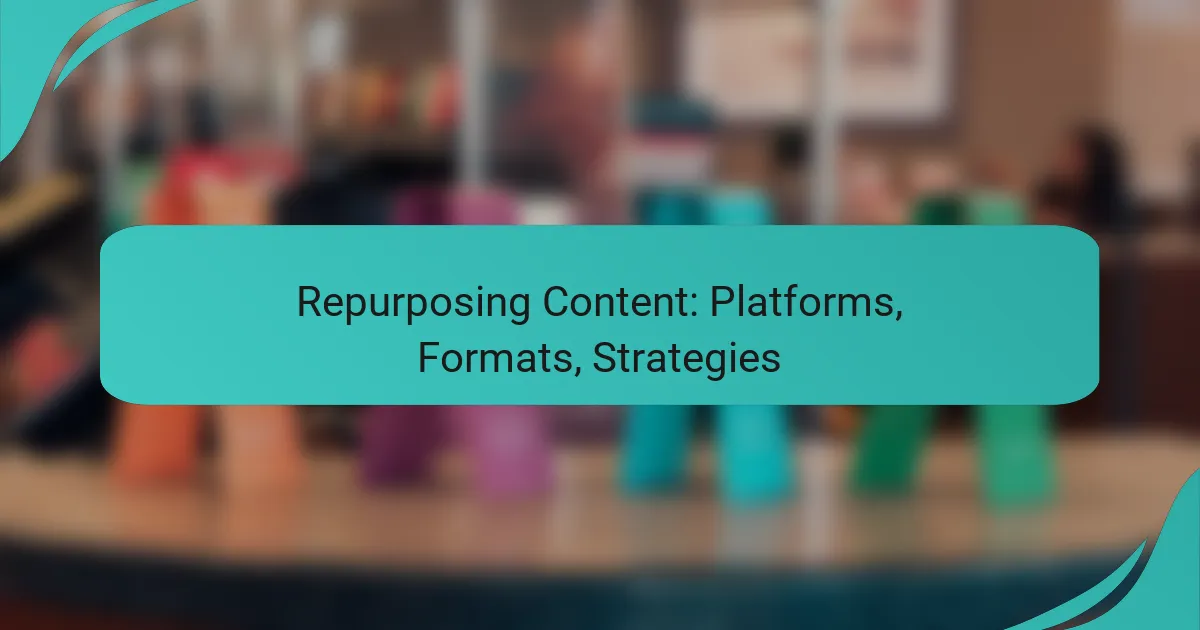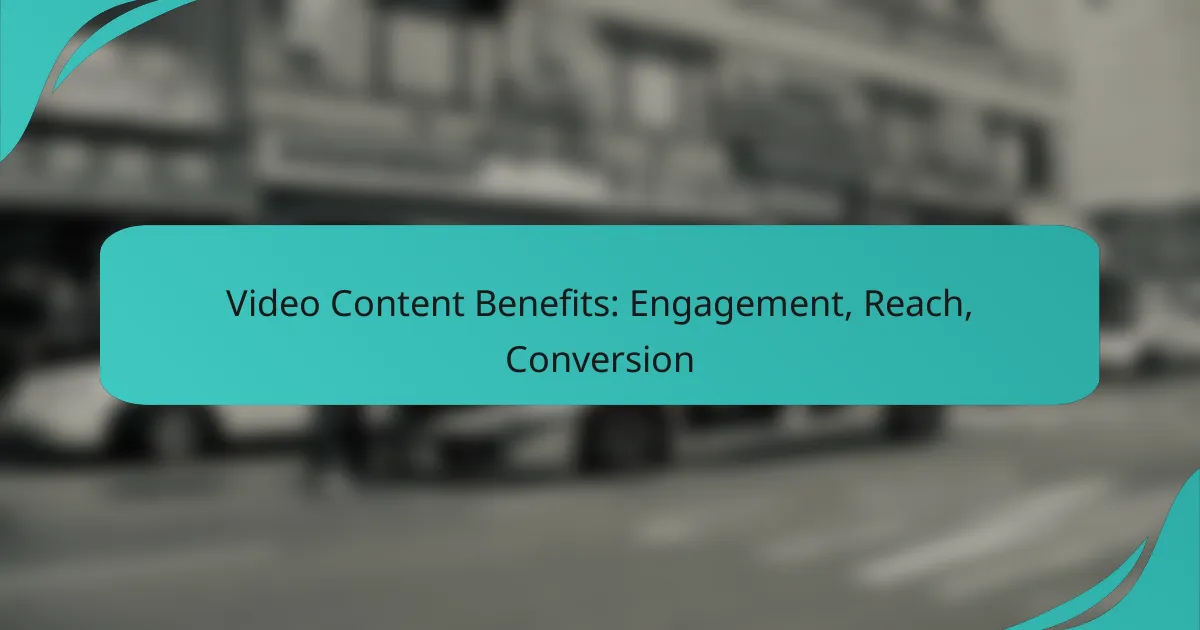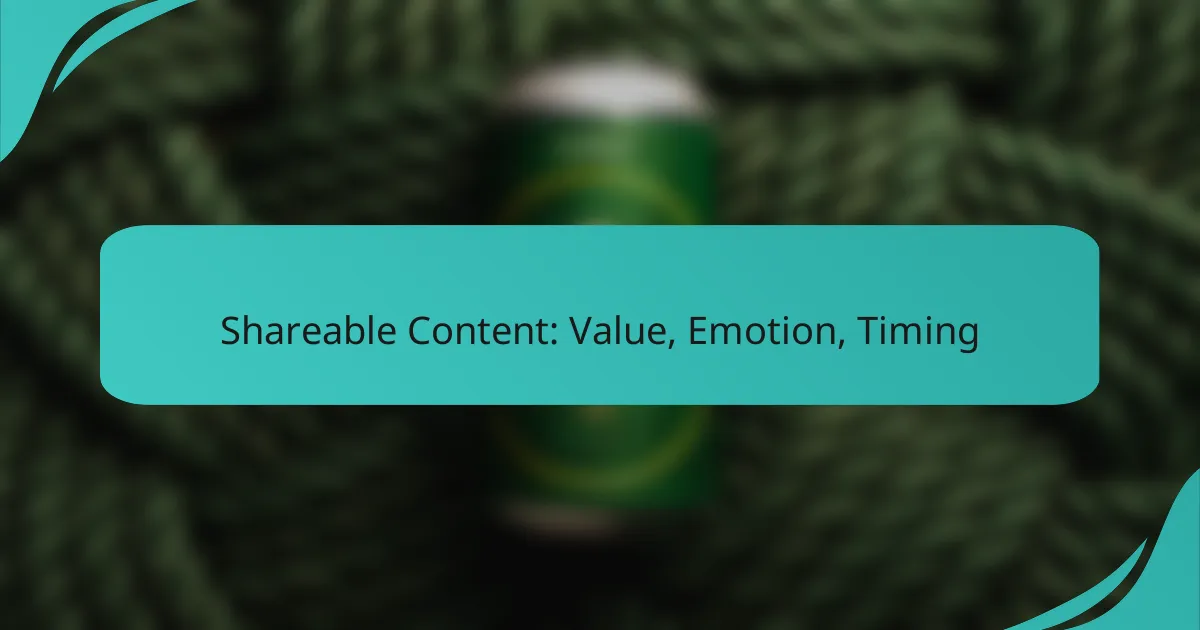Repurposing content is a strategic approach that allows creators to maximize the value of their existing materials by transforming them into various formats suitable for different platforms. By understanding your audience and the unique advantages of each medium, you can effectively engage diverse demographics and enhance your content’s reach. Whether it’s converting a blog post into a video or an article into an infographic, the right strategies can significantly boost engagement and visibility.
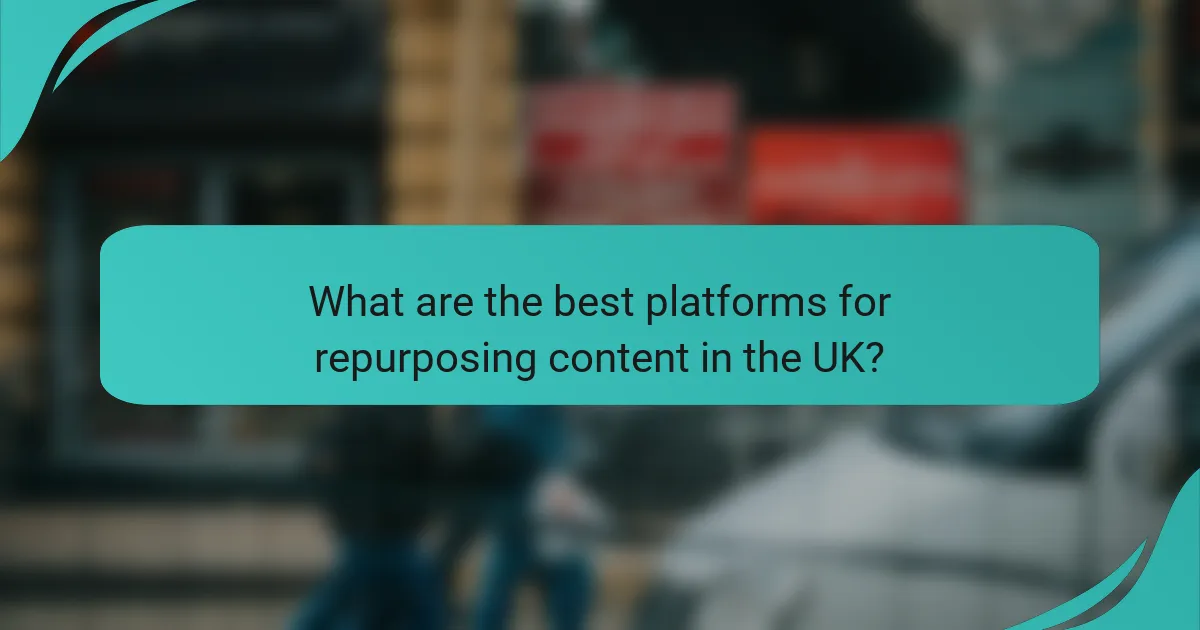
What are the best platforms for repurposing content in the UK?
The best platforms for repurposing content in the UK include social media, blogging sites, video sharing platforms, email marketing tools, and podcast hosting services. Each platform offers unique advantages for reaching different audiences and maximizing the value of existing content.
Social media platforms
Social media platforms like Facebook, Twitter, Instagram, and LinkedIn are excellent for repurposing content due to their vast user bases and diverse formats. You can transform blog posts into engaging posts, infographics, or short videos to capture attention. Consider tailoring your message to fit the platform’s audience and style.
For example, a detailed article can be summarized into a series of tweets or a visually appealing Instagram carousel. Always include a link back to the original content to drive traffic and engagement.
Blogging platforms
Blogging platforms such as WordPress and Medium allow you to repurpose content by expanding on existing topics or creating new posts from previously published material. You can update old articles with fresh information or compile related posts into a comprehensive guide. This not only enhances SEO but also provides value to your readers.
Consider using internal links to connect new content with older posts, which can improve site navigation and keep readers engaged longer.
Video sharing sites
Video sharing sites like YouTube and Vimeo are ideal for repurposing written content into video format. You can create tutorials, summaries, or discussions based on your articles. Videos can reach a broader audience and often have higher engagement rates compared to text alone.
When converting content to video, focus on clear visuals and concise messaging. Including captions can also make your videos more accessible and engaging for viewers.
Email marketing tools
Email marketing tools such as Mailchimp and Constant Contact can be used to repurpose content by sharing snippets or highlights from your blog posts or videos. Crafting a newsletter that summarizes key points or offers exclusive insights can keep your audience informed and engaged.
Utilize catchy subject lines and compelling calls to action to encourage readers to click through to the full content. Segmenting your email list can also help tailor messages to specific audience interests.
Podcast hosting services
Podcast hosting services like Anchor and Podbean provide a platform to repurpose written content into audio format. You can discuss topics from your articles or interview experts related to your content. This format allows you to reach audiences who prefer listening over reading.
When creating a podcast, ensure high audio quality and engaging discussions. Promote your episodes on social media and link back to your original content for additional context and resources.
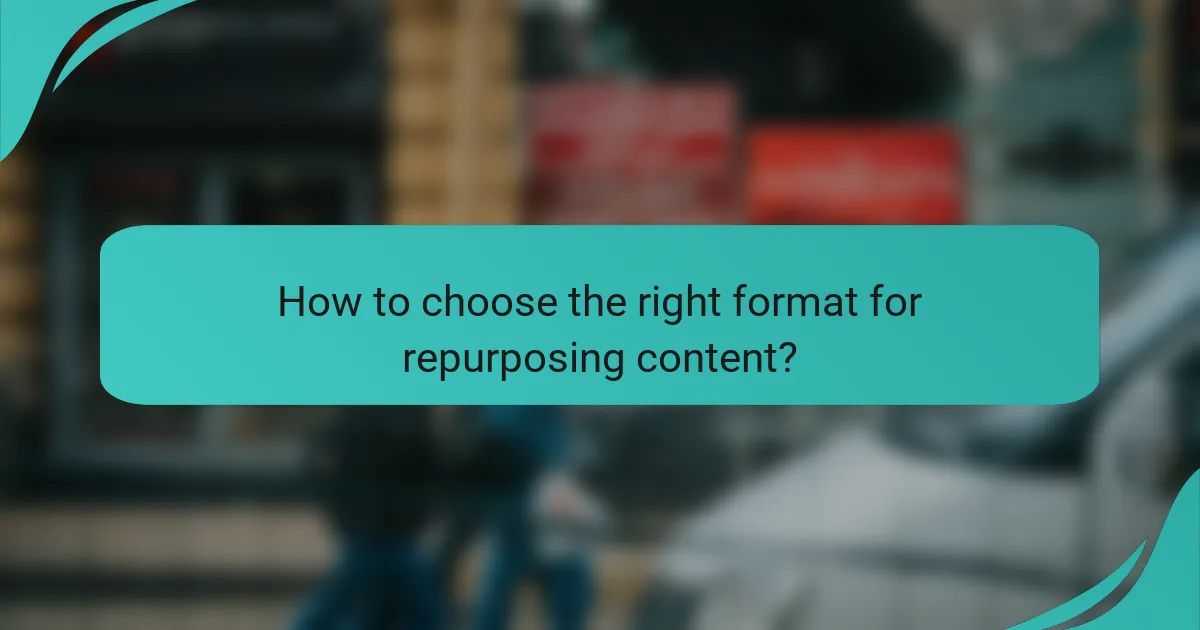
How to choose the right format for repurposing content?
Choosing the right format for repurposing content involves understanding your audience, the type of content you have, and the potential for engagement. Each format serves different purposes and can resonate differently with various demographics, so it’s crucial to align your strategy accordingly.
Audience preferences
Understanding audience preferences is essential when selecting a format for repurposing content. Conduct surveys or analyze engagement metrics to determine which formats your audience enjoys most, whether it’s videos, podcasts, infographics, or articles. Tailoring your content to these preferences can significantly enhance its effectiveness.
For example, younger audiences may prefer short, engaging videos on platforms like TikTok, while professionals might favor in-depth articles or webinars on LinkedIn. Knowing where your audience spends their time can guide your format choices.
Content type compatibility
Not all content types translate well into every format. Consider the nature of your original content when repurposing. For instance, a detailed blog post can be transformed into a series of social media posts, while a podcast episode might be better suited for a transcript or a video summary.
Evaluate the core message of your content and how it can be effectively conveyed in different formats. For instance, data-heavy content may work well in infographics, while narrative-driven pieces could be adapted into storytelling videos.
Engagement potential
Assessing the engagement potential of various formats is crucial for successful content repurposing. Formats that encourage interaction, such as quizzes or polls, can significantly boost audience engagement compared to static formats. Consider how each format can foster a two-way conversation with your audience.
For example, a live Q&A session based on a previously published article can generate real-time interaction, while a downloadable guide may lead to fewer direct engagements. Aim for formats that not only convey information but also invite audience participation and feedback.
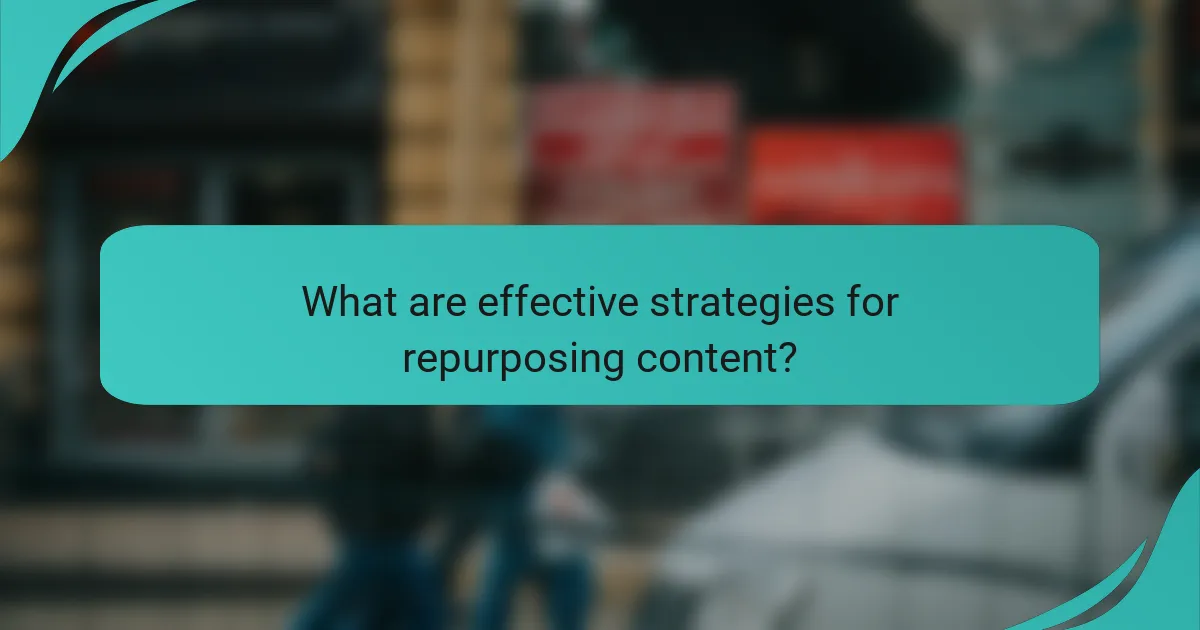
What are effective strategies for repurposing content?
Effective strategies for repurposing content involve transforming existing materials into various formats to reach different audiences and maximize engagement. This can include converting articles into infographics, webinars into podcasts, and blog posts into videos, each tailored to specific platforms and audience preferences.
Creating infographics from articles
Infographics are a powerful way to distill complex information from articles into visually appealing formats. Start by identifying key points and statistics from the article, then use design tools like Canva or Adobe Spark to create a layout that highlights these elements. Aim for clarity and simplicity to ensure the infographic is easily digestible.
When designing, consider your audience’s preferences and the platforms where the infographic will be shared. For instance, social media platforms like Instagram and Pinterest are ideal for visual content. Keep text minimal and focus on impactful visuals to capture attention quickly.
Turning webinars into podcasts
Transforming webinars into podcasts allows you to reach audiences who prefer audio content. Begin by recording the webinar, ensuring high-quality audio and clear delivery. Edit the recording to remove any visual references and enhance audio clarity, making it suitable for a listening audience.
Consider adding an introduction and conclusion to provide context and summarize key takeaways. Distributing the podcast through platforms like Apple Podcasts or Spotify can help you tap into new listener demographics. Promote the podcast on social media to drive traffic and engagement.
Transforming blog posts into videos
Converting blog posts into videos can significantly enhance engagement, as video content is highly favored across many platforms. Start by outlining the main points of the blog post and scripting a concise narrative that captures the essence of the written content. Use tools like Animoto or Adobe Premiere to create the video.
Incorporate visuals, such as images or animations, to complement the narrative and maintain viewer interest. Aim for a video length of around 3 to 5 minutes to keep it engaging. Share the video on platforms like YouTube and social media to maximize reach and encourage interaction.
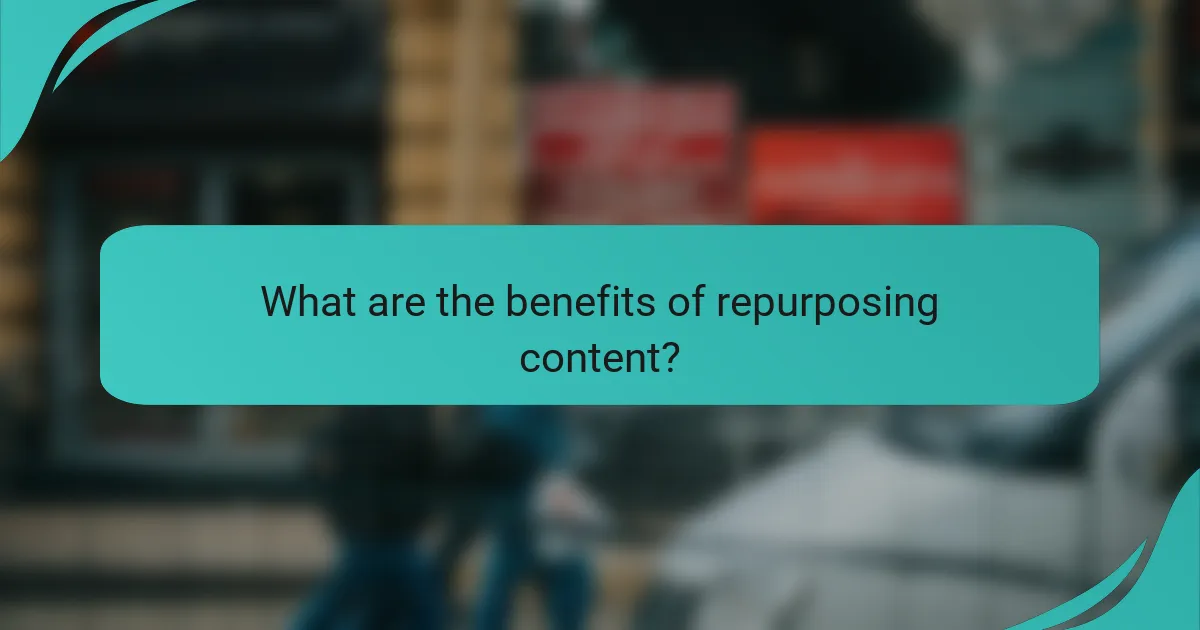
What are the benefits of repurposing content?
Repurposing content allows creators to maximize the value of their existing materials by adapting them for different platforms and formats. This strategy not only saves time and resources but also enhances audience engagement and reach.
Increased reach
Repurposing content can significantly expand your audience by distributing the same message across various platforms. For example, a blog post can be transformed into a video, infographic, or social media posts, reaching users who prefer different formats.
Consider tailoring content to specific platforms like Instagram, LinkedIn, or YouTube. Each platform has unique user demographics and preferences, so adapting your content accordingly can help you connect with a broader audience.
Improved SEO
Repurposing content can enhance your search engine optimization (SEO) efforts by creating multiple entry points for users to discover your material. Different formats, such as videos or podcasts, can rank for various keywords, increasing your visibility online.
To maximize SEO benefits, ensure that each repurposed piece includes relevant keywords and links back to your original content. This strategy not only drives traffic but also establishes your authority in your niche.
Cost efficiency
Repurposing content is a cost-effective strategy as it reduces the need for constant new content creation. By leveraging existing materials, you can allocate resources more efficiently, focusing on quality rather than quantity.
For instance, if you have a well-researched white paper, consider breaking it down into a series of blog posts or social media snippets. This approach not only saves time but also allows you to maintain a consistent content schedule without incurring additional costs.

What are the common challenges in repurposing content?
Repurposing content can be hindered by several challenges, including maintaining relevance, ensuring quality, and adapting formats for different platforms. These obstacles can affect the effectiveness of the repurposed material and its ability to engage the target audience.
Identifying the right content to repurpose
Choosing the appropriate content for repurposing is crucial. Focus on high-performing pieces that have resonated with your audience, such as popular blog posts, videos, or infographics. Analyze engagement metrics to identify which content types have generated the most interest.
Adapting content for different platforms
Each platform has its own audience and preferred formats, making adaptation essential. For instance, a detailed blog post may need to be condensed into a series of social media posts or transformed into a video. Consider the unique characteristics of each platform, such as character limits on Twitter or visual emphasis on Instagram.
Maintaining quality and consistency
Quality must remain a priority when repurposing content. Ensure that the new format retains the original message and provides value to the audience. Consistency in branding and tone is also important; mismatched styles can confuse or alienate your audience.
Measuring the effectiveness of repurposed content
Evaluating the success of repurposed content is essential for future strategies. Use analytics tools to track engagement metrics like views, shares, and comments across different platforms. This data will help you refine your approach and identify what works best for your audience.

